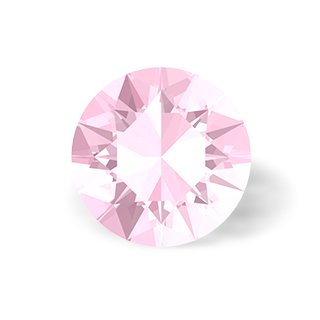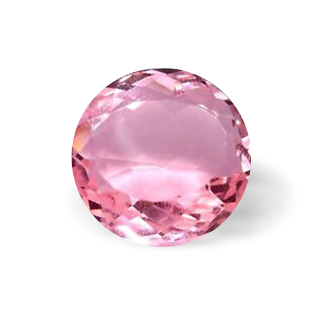All About Rose Quartz: Types, Colors, Description, Origins & Details
The feminine appeal for rosy color of Quartz is here to stay! Isn’t pink a favorite of all?
The color of romance, the color of elegance and the color everyone cannot stop adoring! That being said, the craze for Rose Quartz is fully justified. And that’s exactly what gets us curious this pretty pink gemstone more. Wondering what to look for while buying rose quartz? What exactly makes it so special? What sets it apart from the rest. We’ve answered all your questions under one umbrella with our Rose Quartz education guide to address all the basic knowledge revolving around Rose Quartz right from where it all began to the famous 4 C’s and its properties. Let’s begin this fun filled discussion:
Properties of Rose Quartz
Hardness
Having a hardness of 7 out of 10 on Moh’s scale which is slightly on the higher side, it can be worn on a regular basis with proper care. Didn’t this make it this pretty pink gemstone all the more attractive?
Composition
The most interesting part! What gives this gemstone its soothing pink hues? Well, that’s quite a debate. While some suggest that its rosy color is all thanks to the presence of magnesium, titanium and iron in its composition, others say that it possess small pink fibers of dididumortierite.
Luster
The vitreous or glass like luster of rose quartz along with transparency is another factor that adds to its alluring appearance.
Origin & History
How exactly did this January birthstone come into picture? What is the exact story? Let’s take a look with our Rose quartz guide. Although officially discovered in 1880s, its history dates back to around 7000 BC when captivating rose quartz beads were found in Iraq, then called Mesopotamia. Yes, that old! Thanks to its alluring pink color, it instantly grabbed attention and became a favorite with Assyrians and Romans adorning it passionately in their jewelry. People were also so fascinated by it since it was believed to prevent aging by Egyptians and has been hailed as a stone of love ever since. It was specially famous for being used as talisman by not only Romans but also Greeks. All in all, it was considered a magical stone, even used in healing potions. That’s how it all began!
Where is Rose Quartz found?
Where exactly is Rose Quartz mined today? Take a look with our rose quartz education guide. This semi-precious January birthstone is mined in Brazil, Namibia, Maine, Sweden and California. Talking about its specific formation, belonging to the quartz family, it is known to be formed during the much talked about process of magma crystallization. Precisely, it is formed under the earth’s crust in intense temperatures when hot magma is pushed upwards carrying all kinds of minerals and when it eventually cools down, the combination of silicon and oxygen together gives rise to the formation of rose quartz crystals. Interestingly, it typically gets its color from the presence of magnesium, iron and titanium. Intense, wasn’t it?
Natural Rose Quartz versus Lab Created Rose Quartz

Natural Rose Quartz
A rose quartz that is from the natural process of magma crystallization tends to possess some inclusions since it possesses a mixture of different minerals while its creation under the earth’s crust. The formation of larger crystals of rose quartz can take months. These have not been heat treated while their creation.

Lab Created Rose Quartz
A rose quartz that’s been made in labs by recreating the similar environment tends to have lesser inclusions since it’d been heat treated but in a controlled way. Also, its formation takes much lesser time than its counterparts and thus it is lesser in value as well.
Rose Quartz Quality and Price Filters
Wondering how to buy rose quartz jewelry the right way? What determines the quality of this pretty pink January birthstone? Well, it is typically determined by its 4 Cs: cut, color, clarity and carat weight. Let’s give you a glance with our rose quartz buying guide:
Color
The color factor plays an important role while determining the grade of a colored gemstone such as Rose quartz. The color for Rose quartz ranges from very light pink (almost white) to medium-dark pink. The most appealing pink hue is found in larger sizes specimens. However, a faded pink to transparent Rose quartz will be less valuable and fetch lower prices.
Clarity
Natural Rose Quartz tend to have minute marks formed inside by the presence of different minerals or fractures inside the stones. Therefore, the best grade for clarity for an Rose quartz is to be “eye-clean” meaning that the gemstone’s inclusions are not visible to the naked eye.
Carat
The weight of Rose Quartz, having a direct impact on its price, depends on its size as well. Its not hard to find a large rose quartz having more CT weight. In our collection, rose quartz ranges from a minimum of 0.01 to over 2 CT.
Cut
In case of the January Birthstone - Rose Quartz, the term Cut can have a number of meanings to determine the overall factor. For Rose Quartz, there can be many cuts such as faceted, cabochons, beads, drops, carvings etc. In terms of price, cut stones occupy the position of costliest followed by cabochons and beads.
Rose Quartz Grading Value
What better way to judge the quality of this January birthstone than having a glance at its much talked about grading system? Devising a rose quartz grading chart helps you judge your gemstone better and in a more easy way. Let’s take a look with our rose quartz guide:
AAAA (Heirloom)
The rarest and the most valuable category! With top 1 % of all Rose Quartz belonging to this category, they have an alluring medium to dark pink color along with a translucent appearance.
AAA (Best)
Another sought after category of this January birthstone! With top 10 % of all Rose Quartz belonging to this category, these have a color rich in medium pink and has a somewhat cloudy appearance.
AA ( Better)
With top 33 % of all Rose Quartz belonging to this category, it is known to be lighter pink in color along with the presence of inclusions which makes them appear cloudy.
A ( Good)
With as many as 75 % of Rose Quartz belonging to this category, it is quite common and lesser in value since it has a pale pink color along with a more cloudy appearance.
Benefits of Rose Quartz
One of the most intriguing parts about a gemstone! Rose Quartz does come with its share of astrological beliefs and healing properties. And that’s what makes it all the more special. Thanks to the serene pink hues of this semi-precious gemstone, it is known to spread a loving vibe all around. Let’s take a look at its wholesome benefits:
Physical Healing
Having ties with heart chakra, a Rose Quartz is known to help with heart diseases, getting rid of toxins out of the body in the form of fluids along with kidney problems. It also helps maintain the overall health of circulatory system and high blood pressure.
Emotional Healing
Just like its subtle pink color, a Rose quartz is believed to bless the wearer with peace and calm energy. It helps you overcome emotional traumas, anxiety and fears. All in all, it nurtures your overall growth and radiates positivity in your life.
Spiritual Benefits
A glance at this pink beauty can make you feel like it can paint the whole world pink in love. And that’s exactly what is symbolizing. It strengthens unconditional love and compassion in the life of the wearer.
Frequently Asked Questions
How is a Rose Quartz made?
Rose Quartz is a kind of quartz with chemical composition of silicon dioxide. They are formed in lava when gas bubbles get trapped and allowing crystal formation inside the cavities created by those bubbles. The quartz uniquely grows in huge geodes which are rocks filled with crystal gemstones. The gems in such geodes follow a six-sided pyramidal crystal structure. However, the citrus color of the gemstone is brought by heat treating the quartz.
What is difference between lab grown and natural Rose Quartz?
Like most of the gemstones, there is an option to choose between natural and lab-created Rose Quartz. One must not confuse “lab grown” with the “fake”. While synthetic is a replica the lab grown is developed in a controlled lab environment.
Lab-created Rose Quartz, although, are created using the same base element found in the natural one yet the ones created in lab are strengthened with dye. Also, lab-created Rose Quartz tend to be less expensive than their natural counterparts.
Where do Rose Quartz come from?
Most of the quartz deposits are in Brazil, however, many deposits of treatable amethysts have been found in Arizona.
How to take care of Rose Quartz Jewelry?
Rose Quartz Jewelry is quite easy to clean due to their hardness and durability. However, a few things must be kept in mind like avoiding contact of the gemstone with make-up, harsh chemicals, abrasives.
While cleaning the jewelry make use of lukewarm water and mild cleaning detergent. Soft toothbrush can be used to clean the underside of the Rose quartz.
Also, the jewelry must be individually kept to avoid contact with other jewelry to avoid unnecessary scratches.
What is a Rose Quartz certification?
The most common Rose Quartz Certifications includes from GIA, IGL and HRD labs. It is usually a document you receive on the behalf of the aforementioned 3rd party labs which describes a Rose quartz in all of its characteristics. Each and every party’s defining grounds may defer.
Can Rose Quartz be in the sun?
It is advisable to keep your rose quartz gemstone away from prolong exposure of sunlight since some discoloration is bound to occur.
What does rose quartz represent?
Rose quartz has an interesting and rich history. Thanks to its alluring as well as soothing rosy color, it is believed to be used by Egyptians to maintain their youthful beauty and by Greeks to signify a sense of ownership. It has since then been hailed as a stone of love and luck.
What is the birthstone or Rose Quartz?
Rose Quarts is a famous birthstone of January, making it extra lucky for all the January babies out there.
Conclusion
The soothing blushy hues of rose quartz has made its way to our hearts like nobody else. Be it its feminine appeal or soft hues signifying the color of love, we’re all an admirer of its beauty. And since it is so abundantly found and is equally popular, why not grasp some Rose Quartz education ourselves? That’s exactly why we have come up with our very own rose quartz guide to facilitate you with facts, history and beliefs surrounding this beautiful January birthstone. We’re sure you’d have a lot to take away from this detailed discussion and would be able to judge your gemstone better. That’s the entire point. Having said that, here we sign off wishing you all the luck in selecting your favorite rose quartz jewelry.

